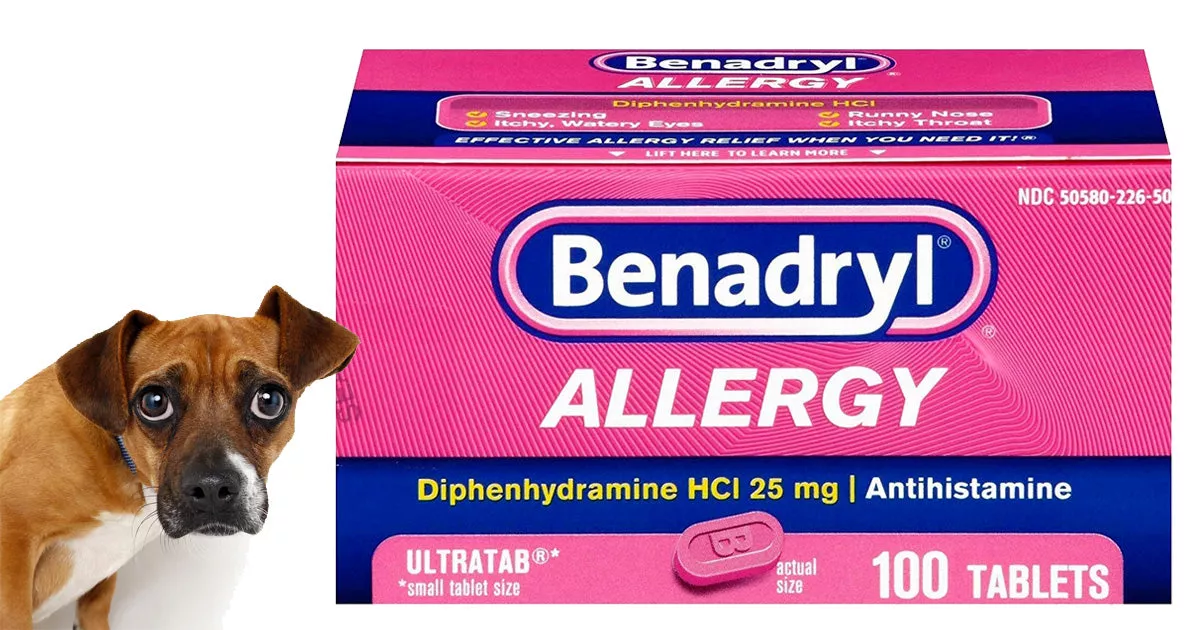Is It Safe For Dogs To Take Antihistamines

At certain times of the year the ground, grass, leaves and air can be filled with substances and particles that can be ingested or inhaled and some of these can cause some dogs to have allergic reactions.
The end result can be anything from itchy skin, spots and glazed eyes to something more severe like gastrointestinal problems. We have found that the milder symptoms can certainly be treated (in most cases) with an antihistamine of some description.
I myself suffer with an intolerance to wheat which causes my skin to break out in large hives when I work up a sweat or my metabolism increases dramatically. It seems that exercise triggers a reaction and can worsen an immune systems response to particular wheat proteins.
This can result in a life threatening anapyhylaxis but I have to say my condition has never been worse than hives on the skin, a slight tightening of the throat and shortness of breath. But, as you can imagine I have no desire to eat a large baguette and then sprint around the block any time soon!
Now, I don't know if this can be as serious for dogs, but I do think it is well worth investigating the effects of allergens to see if you can decrease or indeed stop the uncomfortable symptoms. Even if these symptoms are quite mild now you should consider treatment as soon as possible, as it is almost impossible to know how severe a reaction is going to be in the future.
THE DOG'S STORY
Cooper's story is quite simple but the treatment is ongoing. Part of the reason for this is that we haven't actually nailed it down to one particular thing. This is proving to be very difficult to do, but certain steps seem to be helping. And we'll have a couple of posts on the wonderful properties of Aloe Vera and Sudocrem to come as they are in some way linked to this post.
As I said before, our boy has always been quite sensitive and we have noticed red itchy patches on his belly and surrounding area. He also developed a slight red patch around his mouth. We tried Cooper on a mild antihistamine - a Piriton syrup.
This did seem to work and the liquid appeared to get into his system quickly. However, on the recent advice of a vet we found that the sugar content is quite high in the piriton syrup and if administered for long periods can cause teeth to rot. We are now trying him on 2mg of piriton tablets per day which is half of one tablet in the standard size.
One thing we will say is that before you embark on a journey of administering drugs, do make sure that it is not something else. For example, if the problem areas seem to be around the belly area then it could also be a flea problem. If you see red spots or itchy bumps and your dog seems to be gnawing at some of those irritated areas then it just might be best to seek the advice of a vet or specialist before you do anything else.
WHAT IS IN A COMMON ANTIHISTAMINE?
The base chemical of the Piriton brand tablet is Chlorphenamine Maleate which is a common antihistamine. This drug was classified as safe by our vets and he advised us not to give him any other common drug like Loratadine and Cetirizine. Of course, we advise you to check with your vet first before giving your dog any of these drugs. Remember that antihistamines and certain hay fever medications can cause drowsiness in humans so please do monitor your dog to see how it reacts to the dose and our advice is to start on a low dose, especially if you have a very small dog! Again, ALWAYS be safe and seek medical advice if you need to.
LAB INTOLERANCE TEST FOR DOGS
We also went down the road of getting what was called a detailed lab intolerance test. All we needed to do was take a few hair samples from Cooper and send them away to get tests done. The results came back in about a week and they were quite shocking.
Basically, the test highlighted the fact that Cooper had an intolerance to a huge variety of foods as well as showing a number of inflammatory and chemical toxicity issues. Of course, the whole food allergy issue is a whole new ball game and we could write a whole post on that subject. But, let's get back to the test results.
According to the test results Cooper was allergic to things like gluten, corn, wheat germ and a number of fruits like apple, orange and kiwi. Most alarming was the fact that Turkey, Chicken and lamb were listed under meat and poultry - and a lot of these ingredients are found in most kibble and wet dog foods.
Bizarrely, he was also allergic to things like aluminium, copper and even acid rain! Whether you want to accept the results of these tests or not, our advice is not to become too worried if they show a huge list of potential problem areas. It is your decision if you want to take this test but we have found that it has only muddied the waters further and has not really backed up any of our other findings.
IS IT AN ENVIRONMENTAL ALLERGEN?
So is the problem to do with something in the air or on the ground? Sometimes, it is so difficult to know the root of the problem. All we know is that for Cooper it can be one of many different things and possibly a combination of a few. You can become borderline OCD about this and if the lab tests are to be believed we need to stay away from certain chemical elements and not walk Cooper in the rain close to a manufacturing plant or process that might cause acid rain!
But on a basic level, we originally thought that cooper was allergic to grass. This is because he developed spots on his belly when he was in contact with grass for long periods. We later learnt that in reality, it is not contact with grass that causes the problem but actually the grass pollen.
The powdery grass pollen is more prominent in spring and summer and it is through the inhalation of this substance that can cause an allergic reaction.
If you feel that grass pollen might be a problem, just wipe your dog's paws when it comes into the house and make sure you cut the grass regularly. Taller grass collects more grass pollen and cleaning paws should help if your dog licks them. Again, an antihistamine might help with mild skin rashes and conditions if they show up regularly after contact with grass or other environmental allergens.
IS IT A FOOD ALLERGY?
Another way is to go through what is called a hydrolysed protein diet. This will include foodstuffs that your dog has probably never tried before and will give it a thorough rest period from problem foods. You can then start from a blank sheet and reintroduce foods one at a time.If you think it is a food allergy then you can eliminate what you think are the problem foods and then reintroduce them gradually.
In our opinion, the process of trial and elimination is the best option for almost every case that does not include serious symptoms. And if your dog seems to be happy and in good spirits most of the time (and is not too distressed) then that is probably more important than spending a lot of time and money building the perfect diet and environment for your dog.
As a supplier and manufacturer, we are always looking for products that can help give a more comfortable life for dogs and cats. For example, our range of dog drying coats include 70% bamboo in the lining. This fabric has round, soft fibres and is said to cause little or no irritation to skin. We chose this fabric to offer a more comfortable alternative to other traditional fabrics with sharper fibres.
Please feel free to comment on this post below or anything to do with this subject on antihistamines for dogs and/or our business. We'd love to hear about your own experiences too and we are very happy to answer any questions when we can.
Andy, wiggles and wags
-
Posted in
allergens and dogs, antihistamines, can my dog take antihistamines, dog allergies, piriton for dogs, skin conditions in dogs





